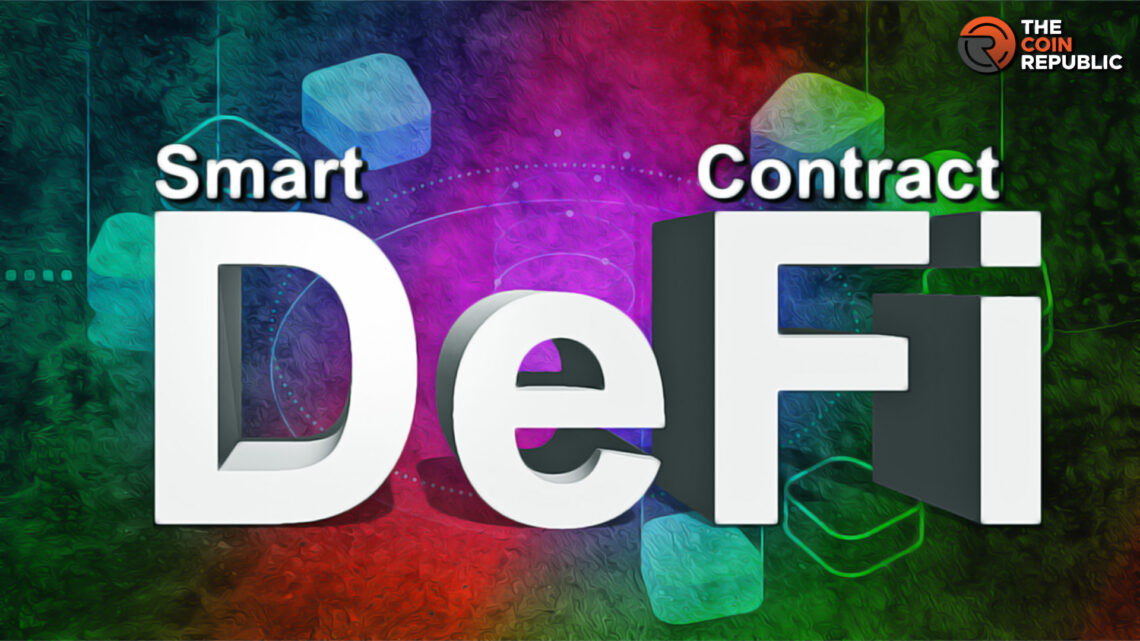- 1 DeFi’s rapid growth demands rigorous smart contract security.
- 2 Best practices include testing, formal verification, and modular design.
- 3 Industry collaborations and insurance enhance DeFi security.
Decentralized finance (DeFi) is growing faster due to its added advantage and the most promising sectors in the blockchain space. DeFi platforms allow for financial services such as borrowing, trading, and lending without the need for financial intermediaries. Smart contracts on public blockchains, such as Ethereum power services.
As the value locked in DeFi protocols surges past $100 Billion, ensuring the security of smart contracts underpinning these platforms is crucial. Smart contract vulnerabilities have led to several high-profile exploits resulting in losses of millions of dollars. Let’s explore smart contract security best practices and trends in the DeFi space.
The Risks of Smart Contract Bugs
Smart contracts are self-executing lines of code stored on a blockchain that trigger actions when certain conditions are met. DeFi protocols are built using smart contracts that automate financial transactions and record activity on public ledgers.
However, bugs in smart contract code can lead to disastrous outcomes. Simple programming errors or overlooked logic flaws can allow attackers to exploit contracts. For example, a reentrancy bug allows attackers to withdraw funds repeatedly before a contract updates account balances.
The immutable and irreversible nature of transactions on public blockchains makes smart contract hacks highly damaging. Stolen funds cannot be recovered, and fixes require complex contract migrations. DeFi developers must, therefore, audit code thoroughly to identify vulnerabilities before deployment.
Best Practices for Smart Contract Security
Using trusted development frameworks is crucial for building secure smart contracts. Frameworks like OpenZeppelin incorporate community-vetted code, built-in security measures, and templates for creating contracts securely. Relying on established frameworks reduces the risks of introducing new vulnerabilities in custom code.
Extensive testing across units, integration, and fuzz testing is needed to validate that smart contracts function as expected under different conditions. Testing thoroughly simulates a wide range of usage scenarios to surface potential issues. Contracts should aim for 100% test coverage to ensure all code paths are evaluated.
Formal verification through tools like Certik provides mathematical proof that contract logic adheres to predefined specifications and does not contain flaws. Formal verification goes beyond testing to prove code operates correctly instead of just demonstrating that it works in certain scenarios.
Rigorous code auditing by multiple reputable security firms must occur both before launch and after major code updates. Independent experts often find flaws that developers miss within their own code. All issues discovered during audits should be fixed promptly. Firms like Trail of Bits are considered leaders in smart contract auditing.
Access controls should be implemented so that critical contract functions can only be executed by authorized addresses. This prevents unintended usage or potential abuse. Function-level permissions help limit damage from compromised contracts.
Bug bounty programs incentivize ethical hackers to identify and responsibly disclose vulnerabilities. Rewarding bounties to white hat hackers who spot issues and report them privately allows developers to resolve problems before contracts go live.
A modular architecture spread across multiple smaller contracts contains the impact of any single contract being compromised. Circuit breakers can also halt operations if an issue is detected. Smaller pieces limit interdependencies and blast radius.
Overall, simplicity and minimalism in smart contract design improve readability and security. Complex and convoluted contracts are harder to audit, test, and maintain safely. Lean yet complete functional contracts are ideal.
Advancements in Smart Contract Security and Industry Initiatives
Formal verification is becoming a key method for ensuring smart contract security. By mathematically proving code adheres to predefined specifications, formal verification goes beyond testing alone. As tools have improved, the use of formal verification has increased. For example, Certik’s human-assisted verification was able to boost test coverage for Compound Finance from 77% to 100%.
Leading decentralized finance teams are now employing multi-layered security strategies as standard practice. These include bug bounties, audits from multiple security firms, and formal verification. By combining multiple approaches, overall safety is enhanced. The Aave protocol is one example that utilized four security layers to boost robustness.
Greater collaboration on security standards is emerging across the industry. Groups such as the DeFi Security Alliance are creating security scorecards, response frameworks for threats, and open-source security modules that any project can leverage. Increased coordination enables improved security ecosystem-wide.
Specialty insurance products for smart contract risks are being launched as well. These allow users to purchase coverage through protocols like Nexus Mutual in case flaws result in loss of funds. This provides an extra safeguard beyond the protocols themselves.
There is also a growing emphasis on minimalism and simplicity when designing new protocols. High assurance security can be attained before additional complexity is added by focusing first on core functionality and smaller code sizes. For example, the first version of Compound Finance was just 700 lines of code.
Conclusion
As DeFi grows, securing smart contracts becomes critical to managing technological vulnerabilities. Following best practices around testing, verification, auditing, simplicity, and collaboration helps mitigate risks. Leveraging specialized tools, ethical hacking incentives, and industry coordination bolsters security.
Over time, more advanced security solutions will emerge to further enhance DeFi’s safety. Strong contract security is fundamental to realizing DeFi’s long-term potential. By making security a primary focus now, DeFi can scale sustainably while avoiding catastrophic hacks. Though challenges exist, adhering to current best practices and adopting new advancements can make the vision of secure decentralized finance achievable.

Andrew is a blockchain developer who developed his interest in cryptocurrencies while pursuing his post-graduation major in blockchain development. He is a keen observer of details and shares his passion for writing, along with coding. His backend knowledge about blockchain helps him give a unique perspective to his writing skills, and a reliable craft at explaining the concepts such as blockchain programming, languages and token minting. He also frequently shares technical details and performance indicators of ICOs and IDOs.


 Home
Home News
News







